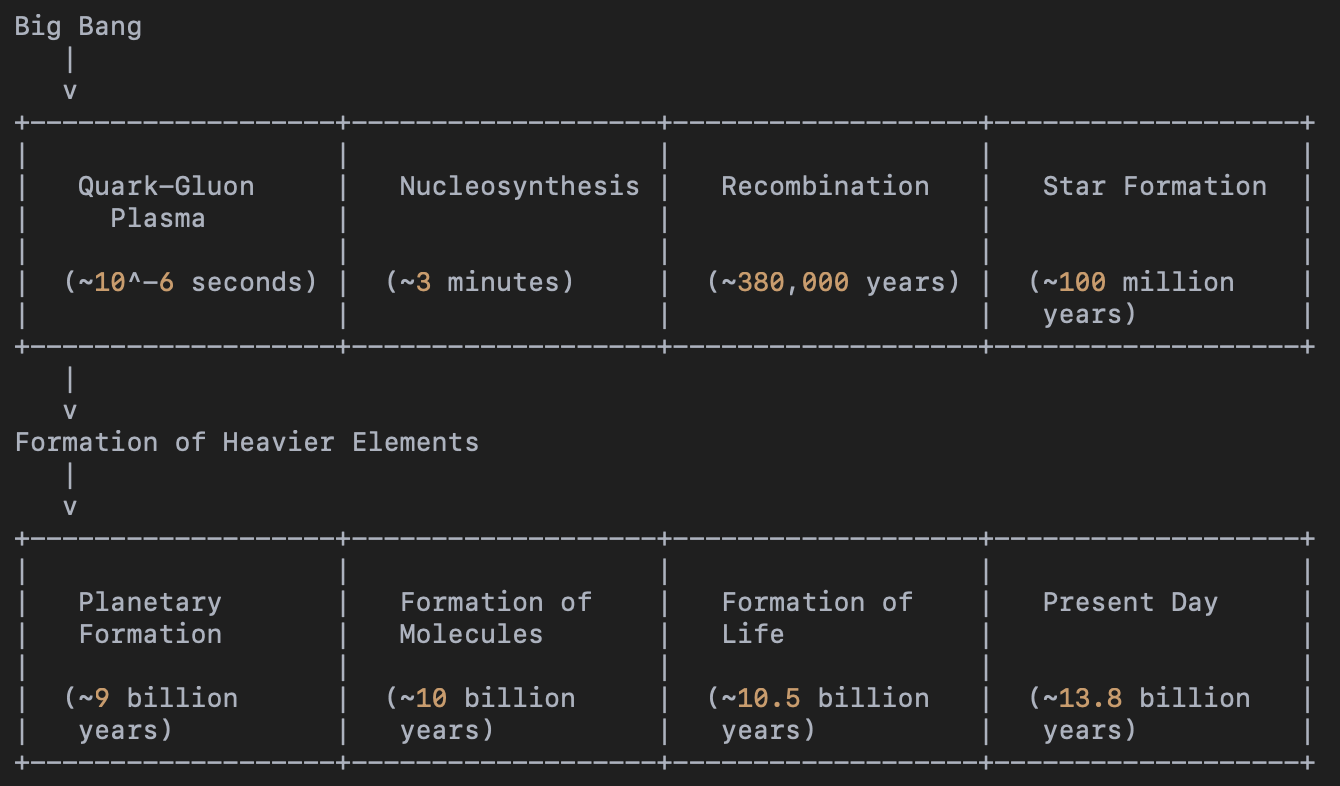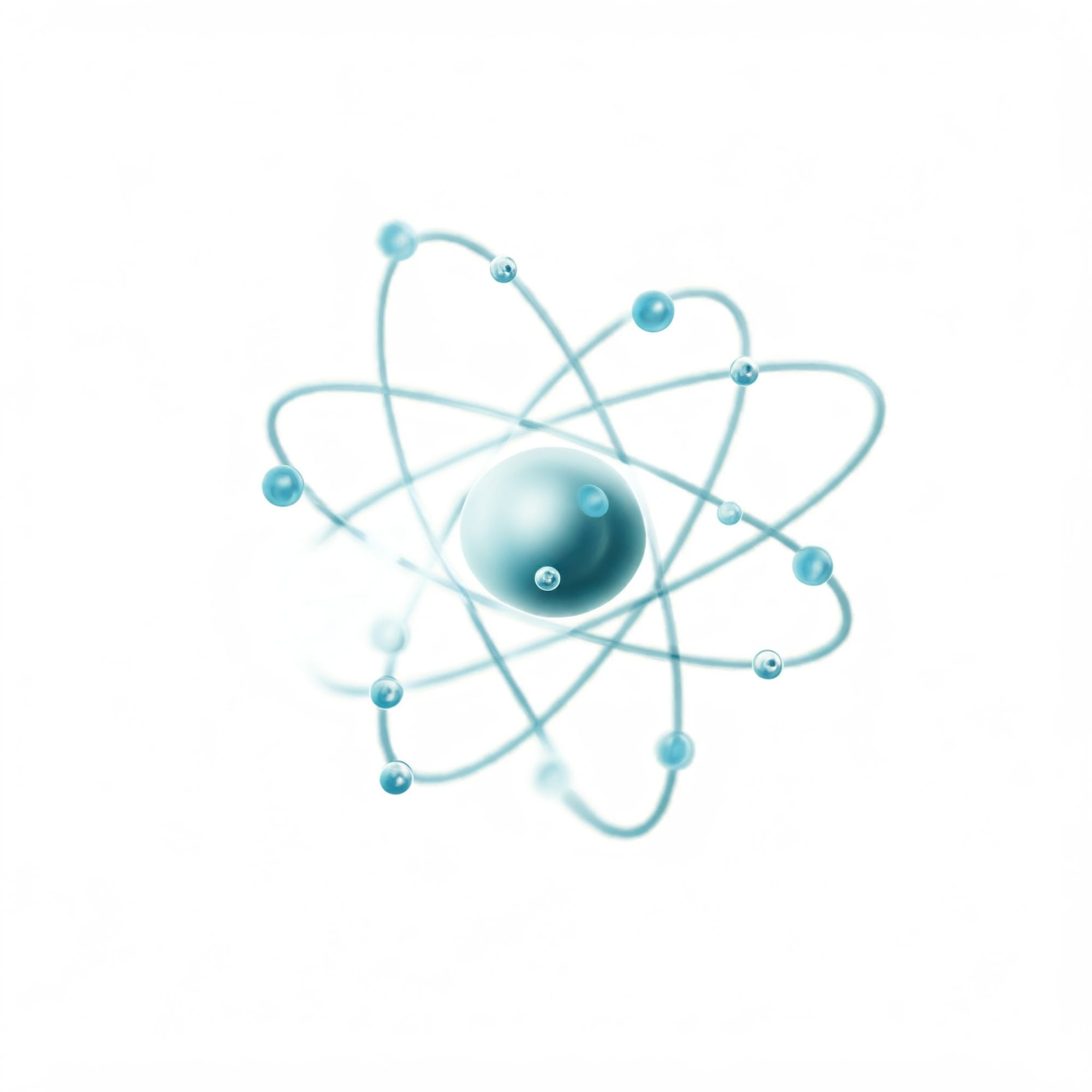History of Atoms

Podcast:
The formation of atoms and their history trace back to the very beginning of the universe:

1. The Big Bang (13.8 Billion Years Ago)
The universe began as an extremely hot, dense point. In the first few moments, it expanded rapidly, creating a soup of fundamental particles like quarks, electrons, and neutrinos.
2. Quark-Gluon Plasma (First Seconds)
Immediately after the Big Bang, the temperature was so high that quarks and gluons roamed freely in a plasma state. As the universe expanded and cooled, quarks began to combine to form protons and neutrons.
3. Formation of Nuclei (First 3 Minutes)
Around three minutes after the Big Bang, the temperature dropped enough for protons and neutrons to stick together through nuclear fusion, forming the first simple nuclei—primarily hydrogen (with one proton) and helium (with two protons and two neutrons). This period is known as Big Bang Nucleosynthesis.
4. Formation of Atoms (380,000 Years Later)
As the universe continued to expand and cool to about 3,000 Kelvin, it reached a point where electrons could combine with nuclei to form neutral atoms without immediately being torn apart by the surrounding energy. This process is called recombination, leading to the formation of the first hydrogen and helium atoms. This marked the decoupling of matter and radiation, allowing photons to travel freely and creating the Cosmic Microwave Background (CMB) that we can observe today.
5. The Dark Ages and First Stars
For millions of years after atoms formed, the universe entered a period known as the Dark Ages, where there were no light sources. Eventually, gravity pulled hydrogen and helium together to form dense regions, igniting nuclear fusion and creating the first stars. These stars began producing heavier elements through fusion processes and supernova explosions.
6. Formation of Heavier Elements
Stars played a crucial role in creating elements heavier than helium. Through nuclear fusion in their cores and explosive supernova events, they formed elements like carbon, oxygen, iron, and more, dispersing them into space when they died. This enriched the cosmos, providing the building blocks for planets, life, and more complex matter.
7. Birth of Modern Atoms
Over billions of years, these processes led to the formation of more diverse elements and compounds that eventually clumped together to form planets, stars, and galaxies. The atoms created in this process are the same that make up everything in the universe today, from the air we breathe to the cells in our bodies.
This sequence, starting from fundamental particles to the rich variety of atoms in the cosmos, underpins the history of the material world.

The birth of atoms is a fascinating story that stretches back to the very beginning of our universe. Here's a simplified timeline:
The Big Bang (13.8 billion years ago)
- The universe begins as an incredibly hot and dense point.
- As it expands and cools, elementary particles like quarks and electrons emerge.
Formation of Protons and Neutrons (3 minutes after the Big Bang)
- Quarks combine to form protons and neutrons, the building blocks of atomic nuclei.
Nucleosynthesis (3-20 minutes after the Big Bang)
- Protons and neutrons fuse together to form the simplest atoms: hydrogen and helium.
- This is known as Big Bang Nucleosynthesis.
Cosmic Dawn (380,000 years after the Big Bang)
- The universe has cooled enough for electrons to join with nuclei, forming stable atoms.
- This marks the end of the "cosmic dark ages" and the beginning of a universe filled with light.
Stellar Nucleosynthesis (Inside Stars)
- Stars like our Sun fuse hydrogen into helium and heavier elements through nuclear fusion.
- When massive stars die in supernova explosions, they scatter these heavier elements across the cosmos.
Planetary Formation (Billions of years later)
- Clouds of gas and dust, enriched with elements from previous generations of stars, collapse to form planets.
- Earth, our home, is born from such a cloud.
Life and Beyond
- On Earth, atoms combine to form complex molecules, eventually leading to the emergence of life.
- The story continues as atoms cycle through living organisms and the environment, shaping the world around us.
Key Points to Remember:
- The first atoms were primarily hydrogen and helium.
- Heavier elements formed inside stars and through supernova explosions.
- Atoms are the building blocks of everything we see in the universe.
This is a simplified overview of a complex process. Scientists continue to unravel the details of how atoms formed and evolved, providing us with a deeper understanding of our cosmic origins.




